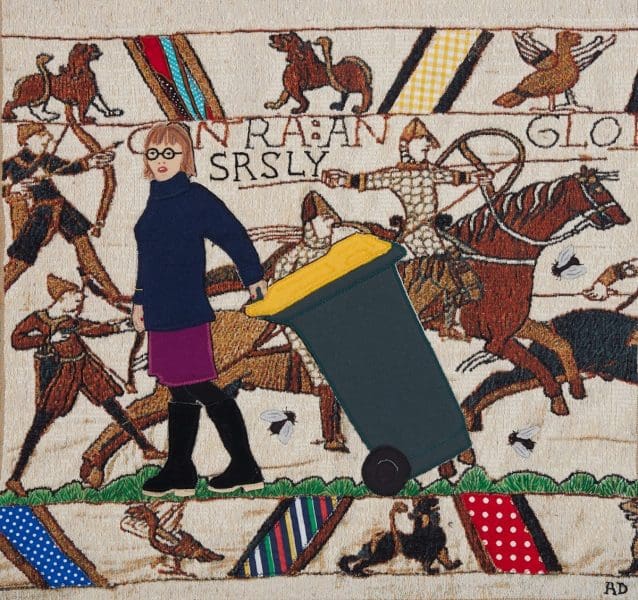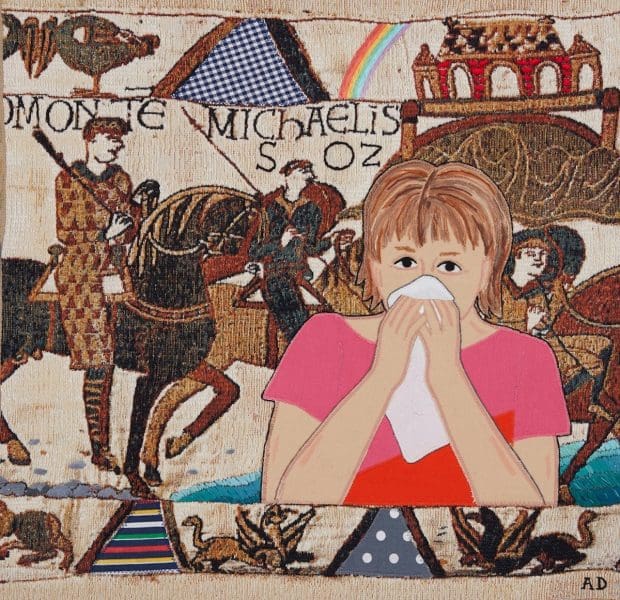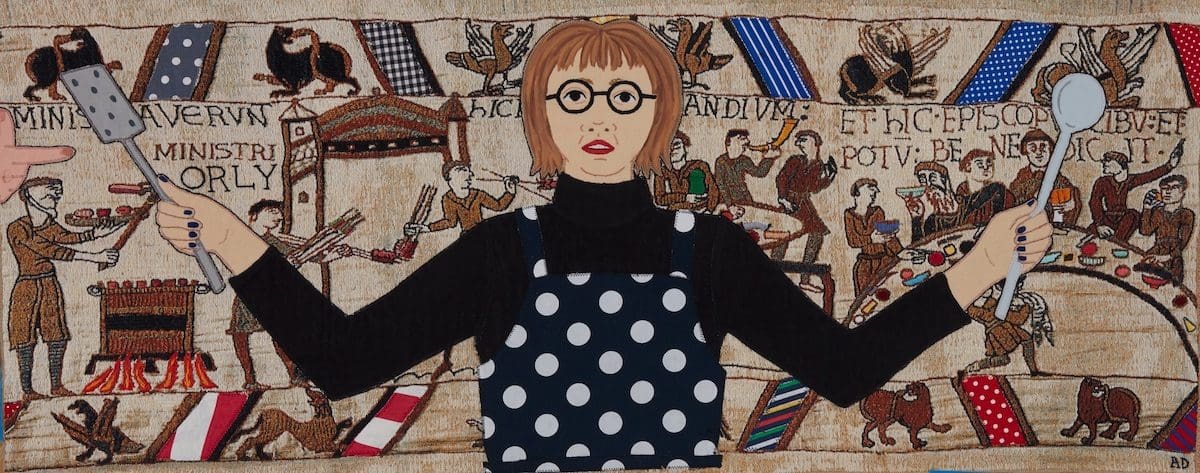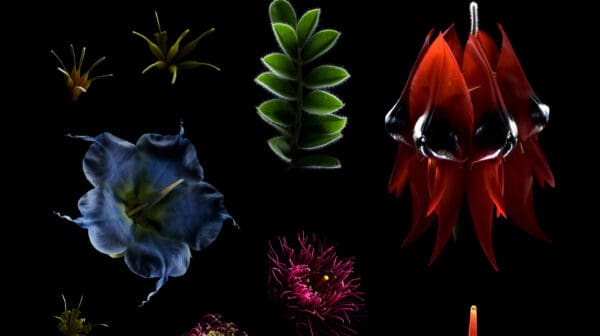At nearly 70 metres long the physical scale of the Bayeux Tapestry is as epic as its content. Although it is called a tapestry, this undisputed textile masterpiece is actually a work of embroidery, most likely stitched sometime in the late 11th century. It is a chronicle of the Norman conquest of England, culminating in bloody slaughter at the Battle of Hastings in 1066; a celebratory piece of propaganda promulgated by the victors.
In her solo show Extra, Adrienne Doig stitched herself into reproductions of the Bayeux Tapestry. This cheeky act of historical revision highlights the fact that in all propaganda, as in all histories, the officially sanctioned version is never the whole story.
Woven reproductions of fragments of the Bayeux Tapestry are readily available for purchase online. In Extra, Doig added images of herself to 13 of these ‘found objects’ by using both appliqué and embroidery techniques. In addition, she took further ownership of each scene by adding her own embellishments, such as giving the soldiers striped socks in bold colours, adding swatches of polka- dotted and striped fabric in red and blue to the already decorative borders, and stitching the truncated phrases of tweeting and texting – YOLO, ORLY, SOZ, et. al – alongside the pre-existing Latin text.
The Bayeux Tapestry records historically significant events, but Doig’s textile interventions, all from 2018, draw attention to the fact that history is made every day just by getting on with life. In SRSLY she depicts herself in her gumboots taking out the yellow wheelie bin, accompanied by a posse of oversized blow flies, while behind her men on horseback gallop at full tilt into battle. In LOL Doig hangs her socks, knickers and bras on the line as the Normans enjoy a musical interlude. In ME 2 Doig poses for a selfie (a self-portrait within a self-portrait) while wearing a bright orange turtleneck jumper. Despite her nod to the hashtag phenomenon, this work seemed to be less about the ongoing issue of institutionalised patriarchy and sexual harassment, and more a comment on the fact that we choose to mediate so many of our daily experiences through the screens of our phones.
But Doig does subtly challenge the patriarchy head-on. By turning the spotlight on the importance of the everyday moments in our own lives, Doig asks us to focus on the mundane moments in the Bayeux Tapestry as well. And at first glance it does seem to present everyday life in incredible detail, not just the drama and horror of war.We see men building ships, tilling fields, cooking food, feasting, and playing music.What’s missing is women.
Despite being a physical manifestation of untold hours of female creativity and labour, according to the Bayeux Museum, where the tapestry is held, of the 600-odd characters depicted there are just three women and three children. By putting herself in the picture Doig cleverly draws our attention to this erasure, and to the ongoing struggle women face in getting their stories told and their voices heard.
Adrienne Doig: Extra, was shown at Martin Browne Contemporary, Paddington, from 23 August to 16 September.
This article was originally published in the November/December 2018 edition of Art Guide Australia.












